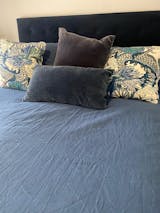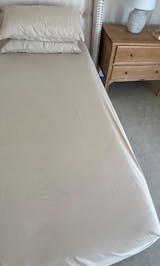Ever feel tired at sunrise, wired late at night, or out of sync with your own body? You might not just be “busy” you could be misaligned with your circadian rhythm, that 24-hour internal clock guiding everything from sleep and appetite to hormone levels and mood.
What is Circadian Rhythm, and Why It Matters
Deep within your brain, the suprachiasmatic nucleus (SCN) acts as the master timekeeper. It responds to light (via your eyes) to sync your internal rhythms - like melatonin release, body temperature, and cortisol spikes with the light-dark cycle.
When that timing gets thrown off due to too little sunlight, blue light exposure at night, irregular sleep schedules, or travel, you start to experience symptoms like sleep disruption, sluggish mornings, jittery evenings, and even mood shifts. Chronic misalignment has been linked to metabolic risk, cardiovascular issues, and mental health challenges.
Jet Lag Isn’t the Only Way Your Clock Can Be Off
📚 Researchers recently discovered a phenomenon called “internal jet lag” where your circadian markers (melatonin, cortisol, body temperature) are misaligned even without traveling. In a Sydney study, 23% of mental health clinic patients experienced internal misalignment, and this misalignment was connected to increased depressive and anxiety symptoms.
Essentially, your brain’s timing can be out-of-sync with your body’s physical cues and the outside world without you ever boarding a plane.

Everyday Misaligners: Sunlight, Social Jetlag & Screen Time
-
Low daylight exposure especially midday light dampens your rhythm. One recent expert tip: getting sunlight between 1–3pm supports sleep-regulating hormones and boosts mood and energy.
-
Social jetlag happens when your weekday schedule clashes with weekends - like going to bed later on Fri/Sat and sleeping in Sunday. Over time, this misalignment worsens sleep quality and metabolic health.
-
Blue light exposure at night (phones, laptops, bright bulbs) suppresses melatonin and slows your body’s ability to wind down.
How to Reset Your Clock: Practical Tips That Support Natural Rhythms
-
Go Outside Mid-Afternoon (1–3 PM)
Aim for 20+ minutes of natural sunlight. It helps anchor your internal clock and improves sleep quality. -
Limit Blue Light After Dusk
Use soft, warm lighting; wear blue‑light blockers if screen exposure is unavoidable. This helps your body ramp up melatonin naturally. -
Stick to Regular Sleep and Wake Times
Even weekends matter. A consistent schedule helps prevent social jetlag and keeps your body aligned. -
Use Light Intentionally When Traveling
If you’re crossing time zones: expose yourself to morning light to advance your clock (ideal when traveling east), avoid bright light in the evening, and consider light‑based planning via apps like Timeshifter. -
Consider Chronobiological Tools (When Appropriate)
Timed melatonin (early evening for eastward travel) and bright-light therapy can accelerate adaptation - but timing matters.
Small Changes, Big Impact
You don’t need a high-performance jet-setting routine to feel out of sync - many of us live in internal jet lag even without travel. Resetting your rhythm is less about rebooting your life, and more about reseting your routine.
With a little more natural light, simpler evenings, and kinder bedtimes, your body clock can fall back into harmony and your sleep, energy, and mood follow.
Want More? We Have You
Our new blog dives deeper into circadian science, coping with internal jet lag, and designing your home and habits for better sleep flow. Plus, our pure linen bedding naturally supports circadian regulation - thanks to its breathable, temperature-balancing properties that help your body release heat at night, when it needs to.
Stay in the loop for effortless sleep-supporting routines, future product features, and gentle wellness inspiration.




























